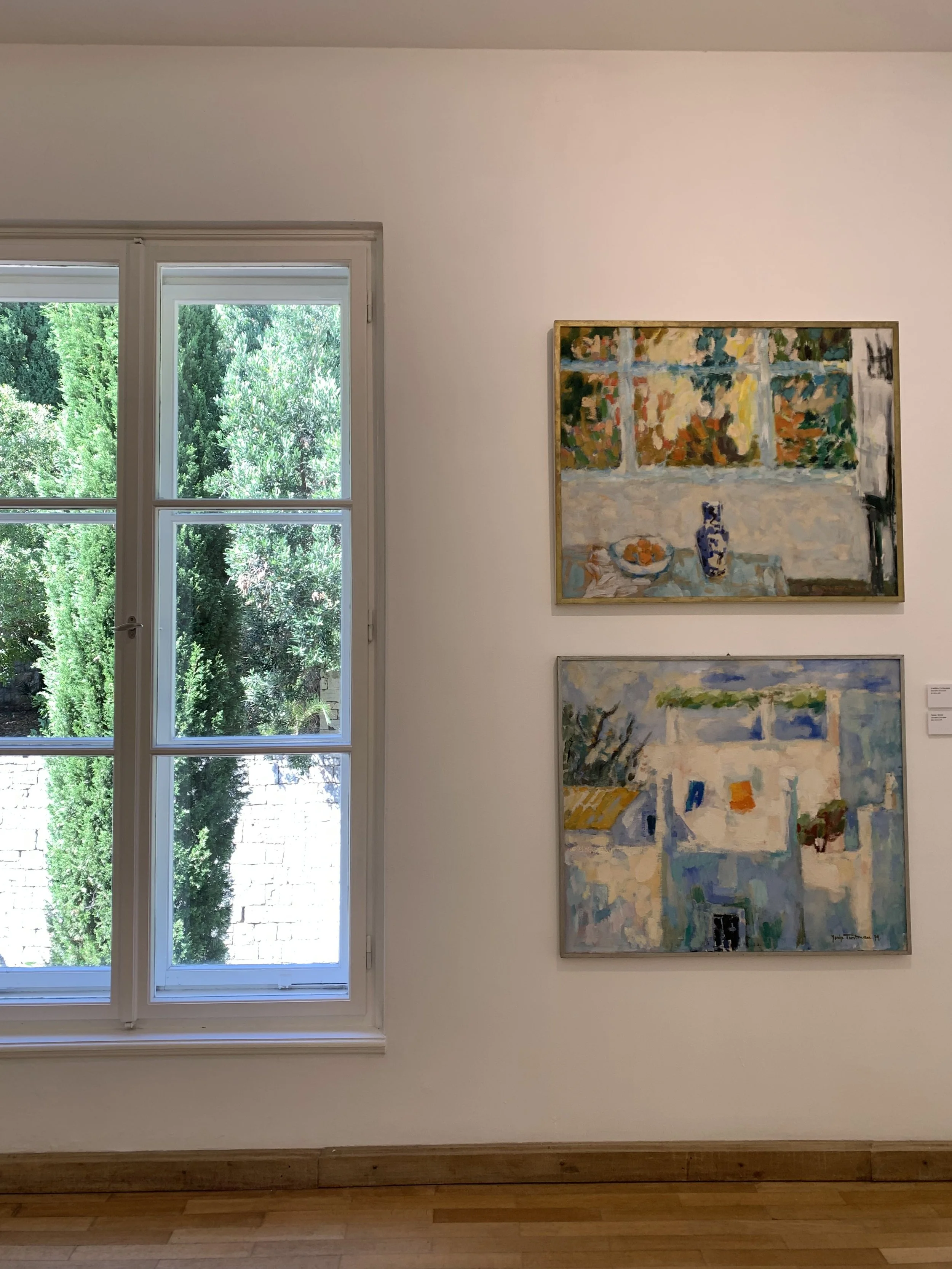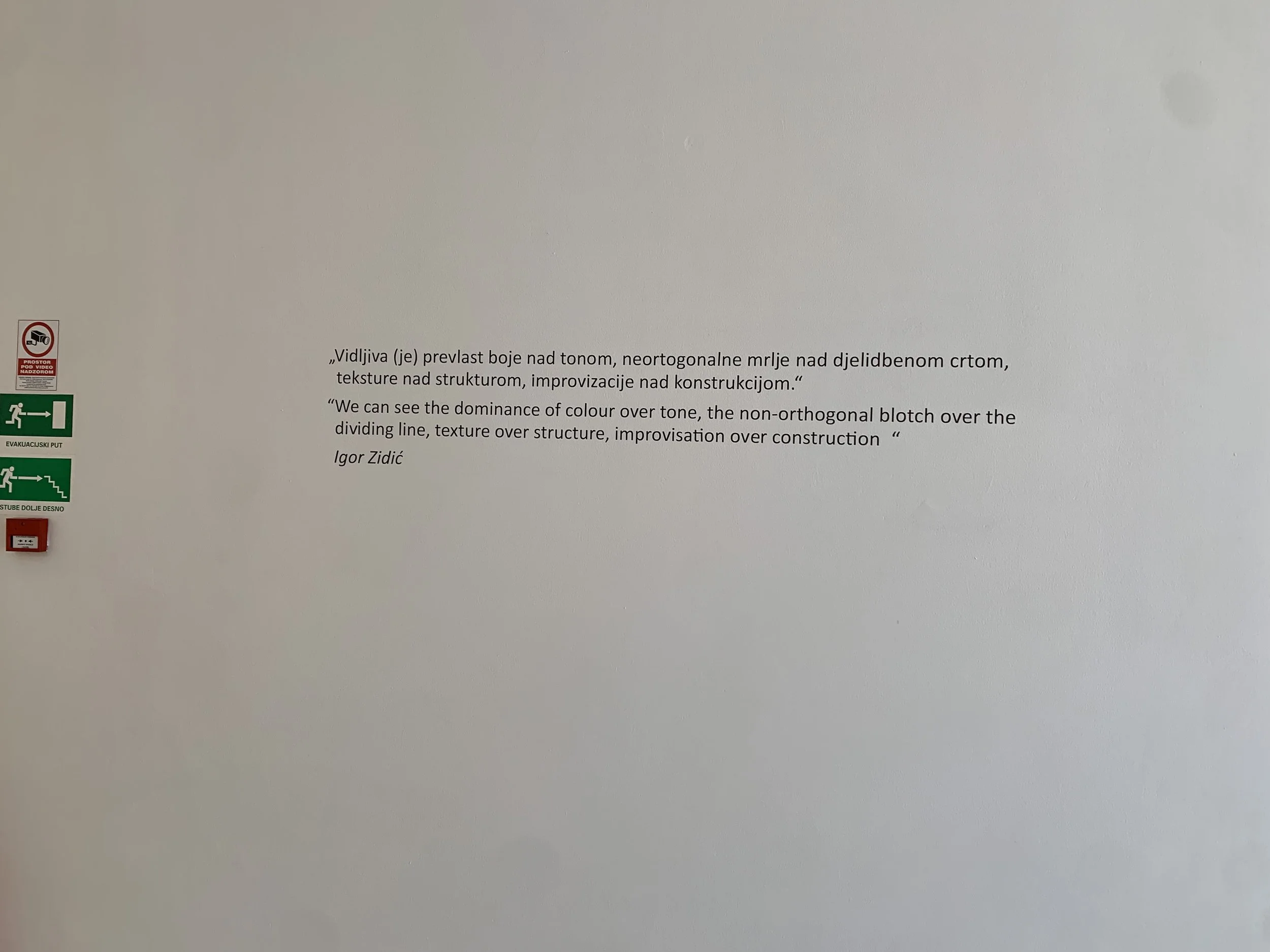Overlooked gem. MOMAD Museum of Modern Art Dubrovnik, Croatia
Ul. Frana Supila 23, 20000, Dubrovnik, Croatia
When people think of Dubrovnik, they think of the beautiful Adriatic sea, the massive city walls, sailing between islands… This is a city of seascapes and selfies for social media. It’s a magnet for fans of Game of Thrones. Art, especially modern art, is not the usual draw. But that’s a shame.
The Museum of Modern Art Dubrovnik, or MOMAD, located just outside the Old Town, in a 1930s villa designed by Croatian architect Lavoslav Horvat and fully built with local stone.
MOMAD is dedicated to the story of Croatian art from the late 19th century to the present. The focus is on Dubrovnik and the Dalmatian coast. It’s a pretty ambitious collection.
Josip Trostman
Find Vlaho Bukovac, one of Croatia’s foundational artists. He fused academic training with a restless, experimental eye. His portraits are luminous and very psychological. You’ll also see painters like Ignjat Job, a genius whose colors and wild brushwork helped define Croatian fauvism — a regional take on the movement that was raw and unfiltered.
Croatian fauvism isn’t something you’ll hear about in most art history books. The thing is, many Croatian artists studied in France and absorbed the tradition of fauvism there. Naturally, when they returned home to Croatia, they applied it all to their reality.
MOMAD tells stories that rarely reach beyond the Adriatic. Here you will learn a lot.
Josip Trostman, Terrace, 1979
Josip Trostman, In the Studio, 1983
Beyond fauvism, MOMAD’s collection shows the evolution of Yugoslav-era modernism: geometric abstraction, postwar existentialism, pop-inflected irony. Temporary exhibitions often spotlight contemporary artists.
Some of the most powerful works at MOMAD trace their roots to the early 20th century, a period when Croatian modernism emerged from the ruins of the Austro-Hungarian Empire. As art historian Natalia V. Zlydneva writes, this was a time of “anticipation of disaster” — a moment when artists like Ljubo Babić and Ivan Meštrović turned to expressionism to grapple with instability, identity, and change. Their work reflects both cultural tension and creative urgency, and MOMAD gives that legacy a quiet but vivid space.
There’s a coastal light in many of the paintings — sharp, clear, occasionally brutal. There’s also a tension: between tradition and innovation, between political pressures and personal vision.
If you came to Dubrovnik for the scenery and usual vacation, come to MOMAD for the art. MOMAD doesn’t advertise itself loudly but you will appreciate it when visiting.






